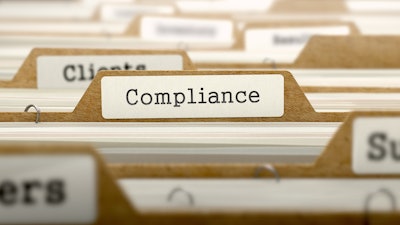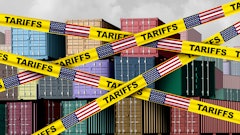
Tariffs are in the spotlight. While the focus is on rising consumer prices, importers face a more immediate challenge—higher bond requirements. With U.S. Customs and Border Protection (CBP) calculating bond sufficiency on a rolling basis, they must secure the right solutions while staying compliant.
How tariffs are driving up bond requirements
Every importer needs a customs bond to bring goods into the United States, but bond calculations are shifting. The U.S. Customs and Border Protection (CBP) determines the required bond amount based on the total duties paid in a 12-month period. When duties were low under historical trade paradigms, bond amounts remained modest. With duty rates increasing from 0-25% or more, importers are seeing bond obligations climb into the millions.
This creates an ongoing challenge. Unlike traditional insurance policies, the issuing agency recalculates customs bonds each month. A small increase in duty payments can trigger the need for a higher bond amount mid-term, forcing importers to adjust quickly. If they underestimate duty obligations, multiple bond increases within a single year could expose them to financial uncertainty and compliance risks.
Many sureties are still adjusting their risk models from prior tariff rounds, meaning some importers may struggle to secure the bond amounts they need.
Potential changes to the De Minimis rule
Beyond tariff hikes, another regulatory shift could further increase bond obligations—particularly for e-commerce importers. The rule, which allows goods valued under $800 to enter the United States duty-free, has long been a key driver of cross-border trade efficiency.
However, rising concerns about trade imbalances, foreign subsidies, and compliance loopholes have led to renewed scrutiny. Lawmakers are considering lowering the threshold, imposing country-specific restrictions, or introducing additional reporting requirements—all of which could create new financial and compliance burdens for importers.
If these changes take effect, importers could face:
- Higher duty payments, increasing costs for low-value shipments.
- Stricter enforcement and compliance requirements, raising the risk of shipment delays.
- Increased bond requirements, forcing brokers to reassess bonding strategies for affected clients.
For brokers and importers, this means staying ahead of potential de minimis changes and ensuring access to flexible bonding solutions that can scale with evolving regulations.
What to look for in a surety partner
As bond sufficiency requirements evolve, working with the right surety partner is more important than ever. Consider:
- Capacity to handle high-limit bonds: Some sureties lack the financial strength to support multi-million-dollar bonding requirements.
- Underwriting approach for Anti-Dumping Duties (ADD) and Countervailing Duties (CVD) risks: Certain imports face heightened scrutiny, and some sureties have restrictions on these bonds due to the potential for large, unpredictable liabilities.
- Real-time data insights: A surety that tracks CBP trends can help anticipate bond changes before they happen.
- Collateral flexibility: Rising duties may require alternative solutions to secure bond capacity.
- Expertise in global financials: Importers with international operations need a surety that understands different financial and regulatory frameworks.
By evaluating these factors, you can avoid last-minute surprises and ensure a smoother process when adjusting bond requirements.
Stay ahead of tariff uncertainty
The trade landscape remains unpredictable. Taking a strategic approach can help mitigate risks and maintain compliance even as regulations continue to shift.
Key steps to consider:
- Review bond limits regularly: As renewals approach, revisit duty forecasts to determine if adjustments are needed.
- Model potential duty increases: A rolling 12-month analysis can help plan for changes in duty exposure.
- Involve key stakeholders: Tariff engineering, sourcing adjustments, and compliance strategies can all impact bond needs.
- Maintain open communication: Keeping informed of regulatory shifts strengthens relationships and ensures they stay ahead.
Importers are facing growing financial and regulatory pressures. In an uncertain environment, anticipating challenges before they arise will strengthen relationships and help navigate the road ahead.

















